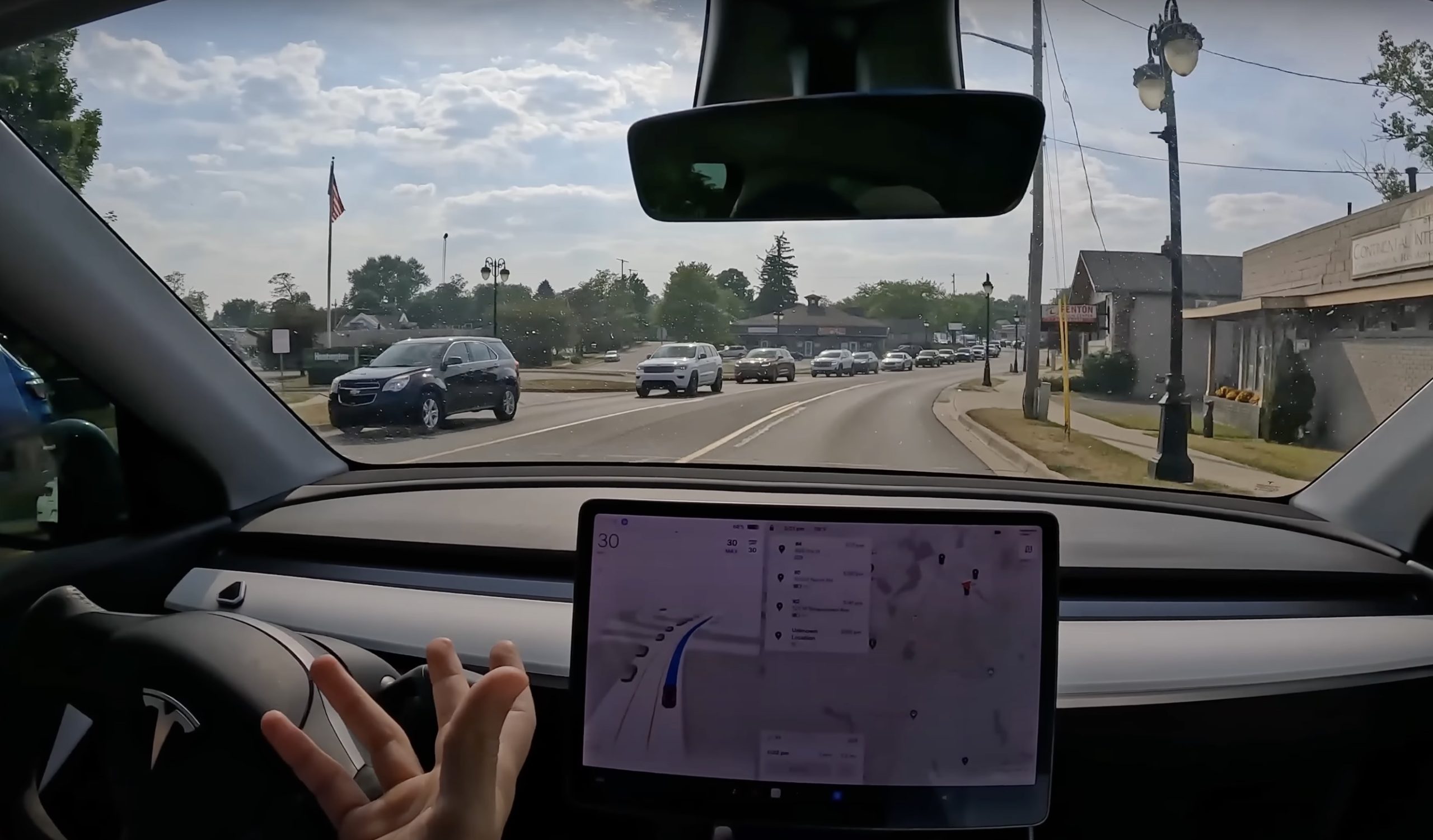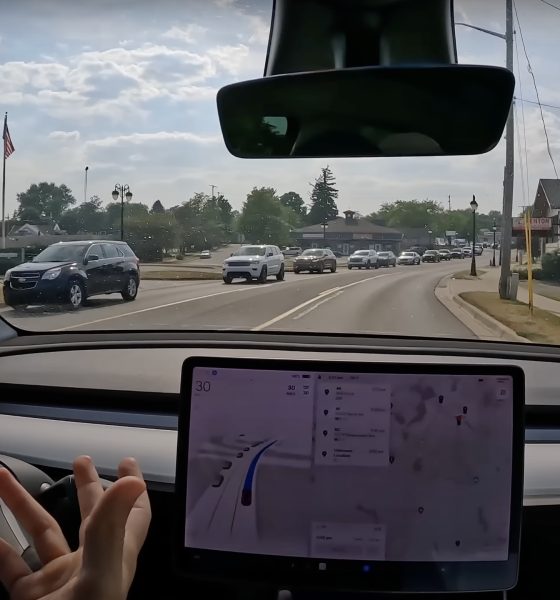Tesla’s Full Self-Driving (FSD) beta version 12 has been a hot topic over the last several months, representing an important switch that’s expected to help unlock higher levels of autonomy. And while the highly anticipated FSD v12 hasn’t yet been deployed publicly, some think that it could go out to a wider audience by the end of this month.
Last month, Tesla began rolling out the FSD beta v12.1 to Wave1, a group made up of over 15,000 employee vehicles. CEO Elon Musk went on to say that Tesla is currently performing extra testing on v12 before the software sees a wider release to the public.
In a recent look at where the FSD beta v12 is at ahead of its release, Teslascope shared a detailed breakdown of events leading up to this point on X over the weekend, adding that they’re “hopeful” that the software will be released sometime in late January. In addition, the account says that Tesla has begun internal tests of Actually Smart Summon (ASS), which has a “very likely chance” of going out later on in the first quarter.
Teslascope also points to recent feedback on the FSD beta v12 received from employees in the Wave1 group, with most answering that the software did indeed include some substantial improvements. These are summarized below, based on at least a dozen reviews shared with Teslascope from employees in California:
Tesla FSD beta v12.1: improvements to “human-like behavior” and general stability
- 72 percent said FSD beta v12.1 includes improvements in “human-like behavior” and general stability.
- 20 percent said there was no change to “human-like behavior” and general stability.
- 8 percent said these factors had worsened.
Tesla FSD beta v12.1: improvements to roundabout encounters
- ~40 percent said FSD beta v12.1 improved roundabout encounters had improved.
- ~50 percent said there was no change to roundabout encounters.
- ~10 percent said these factors had worsened.
Tesla FSD beta v12.1: improvements to lane-keeping
- 37 percent said FSD beta v12.1 offered improvements to lane-keeping.
- 60 percent said there was no change to lane-keeping.
- 3 percent said these factors had worsened.
Despite the hopefulness, the account also notes that the Cybertruck release has caused Tesla to put some extra energy into creating a stable FSD beta build for the vehicle, though Musk recently noted that the electric pickup would be the lowest priority for the FSD beta. Because of the extra effort put into this, the account says that delays could be possible and that they’re continuing to monitor the ongoing deployment of the version to those within the Wave1 group.
Tesla unveiled plans for the FSD beta v12 last year, featuring the elimination of over 300,000 lines of human-written code that previously controlled functions such as steering, acceleration and braking. Instead, v12 is expected to rely much more heavily on its neural network, training its artificial intelligence (AI) through massive amounts of real-time driving footage, and using the neural network to actually control the vehicle, rather than just detecting objects.
Musk also debuted the FSD beta v12 in a live stream in August, and he has also said that the version would lose its “beta” designation. Tesla began rolling FSD v12 out to employees in November, and screenshots from the Wave1 group appeared to show that the version will still use the beta moniker.
What are your thoughts? Let me know at zach@teslarati.com, find me on X at @zacharyvisconti, or send your tips to us at tips@teslarati.com.

News
Tesla FSD fleet is nearing 7 billion total miles, including 2.5 billion city miles
As can be seen on Tesla’s official FSD webpage, vehicles equipped with the system have now navigated over 6.99 billion miles.

Tesla’s Full Self-Driving (Supervised) fleet is closing in on almost 7 billion total miles driven, as per data posted by the company on its official FSD webpage.
These figures hint at the massive scale of data fueling Tesla’s rapid FSD improvements, which have been quite notable as of late.
FSD mileage milestones
As can be seen on Tesla’s official FSD webpage, vehicles equipped with the system have now navigated over 6.99 billion miles. Tesla owner and avid FSD tester Whole Mars Catalog also shared a screenshot indicating that from the nearly 7 billion miles traveled by the FSD fleet, more than 2.5 billion miles were driven inside cities.
City miles are particularly valuable for complex urban scenarios like unprotected turns, pedestrian interactions, and traffic lights. This is also the difference-maker for FSD, as only complex solutions, such as Waymo’s self-driving taxis, operate similarly on inner-city streets. And even then, incidents such as the San Francisco blackouts have proven challenging for sensor-rich vehicles like Waymos.
Tesla’s data edge
Tesla has a number of advantages in the autonomous vehicle sector, one of which is the size of its fleet and the number of vehicles training FSD on real-world roads. Tesla’s nearly 7 billion FSD miles then allow the company to roll out updates that make its vehicles behave like they are being driven by experienced drivers, even if they are operating on their own.
So notable are Tesla’s improvements to FSD that NVIDIA Director of Robotics Jim Fan, after experiencing FSD v14, noted that the system is the first AI that passes what he described as a “Physical Turing Test.”
“Despite knowing exactly how robot learning works, I still find it magical watching the steering wheel turn by itself. First it feels surreal, next it becomes routine. Then, like the smartphone, taking it away actively hurts. This is how humanity gets rewired and glued to god-like technologies,” Fan wrote in a post on X.
News
Tesla starts showing how FSD will change lives in Europe
Local officials tested the system on narrow country roads and were impressed by FSD’s smooth, human-like driving, with some calling the service a game-changer for everyday life in areas that are far from urban centers.

Tesla has launched Europe’s first public shuttle service using Full Self-Driving (Supervised) in the rural Eifelkreis Bitburg-Prüm region of Germany, demonstrating how the technology can restore independence and mobility for people who struggle with limited transport options.
Local officials tested the system on narrow country roads and were impressed by FSD’s smooth, human-like driving, with some calling the service a game-changer for everyday life in areas that are far from urban centers.
Officials see real impact on rural residents
Arzfeld Mayor Johannes Kuhl and District Administrator Andreas Kruppert personally tested the Tesla shuttle service. This allowed them to see just how well FSD navigated winding lanes and rural roads confidently. Kruppert said, “Autonomous driving sounds like science fiction to many, but we simply see here that it works totally well in rural regions too.” Kuhl, for his part, also noted that FSD “feels like a very experienced driver.”
The pilot complements the area’s “Citizen Bus” program, which provides on-demand rides for elderly residents who can no longer drive themselves. Tesla Europe shared a video of a demonstration of the service, highlighting how FSD gives people their freedom back, even in places where public transport is not as prevalent.
What the Ministry for Economic Affairs and Transport says
Rhineland-Palatinate’s Minister Daniela Schmitt supported the project, praising the collaboration that made this “first of its kind in Europe” possible. As per the ministry, the rural rollout for the service shows FSD’s potential beyond major cities, and it delivers tangible benefits like grocery runs, doctor visits, and social connections for isolated residents.
“Reliable and flexible mobility is especially vital in rural areas. With the launch of a shuttle service using self-driving vehicles (FSD supervised) by Tesla in the Eifelkreis Bitburg-Prüm, an innovative pilot project is now getting underway that complements local community bus services. It is the first project of its kind in Europe.
“The result is a real gain for rural mobility: greater accessibility, more flexibility and tangible benefits for everyday life. A strong signal for innovation, cooperation and future-oriented mobility beyond urban centers,” the ministry wrote in a LinkedIn post.
News
Tesla China quietly posts Robotaxi-related job listing
Tesla China is currently seeking a Low Voltage Electrical Engineer to work on circuit board design for the company’s autonomous vehicles.

Tesla has posted a new job listing in Shanghai explicitly tied to its Robotaxi program, fueling speculation that the company is preparing to launch its dedicated autonomous ride-hailing service in China.
As noted in the listing, Tesla China is currently seeking a Low Voltage Electrical Engineer to work on circuit board design for the company’s autonomous vehicles.
Robotaxi-specific role
The listing, which was shared on social media platform X by industry watcher @tslaming, suggested that Tesla China is looking to fill the role urgently. The job listing itself specifically mentions that the person hired for the role will be working on the Low Voltage Hardware team, which would design the circuit boards that would serve as the nervous system of the Robotaxi.
Key tasks for the role, as indicated in the job listing, include collaboration with PCB layout, firmware, mechanical, program management, and validation teams, among other responsibilities. The role is based in Shanghai.
China Robotaxi launch
China represents a massive potential market for robotaxis, with its dense urban centers and supportive policies in select cities. Tesla has limited permission to roll out FSD in the country, though despite this, its vehicles have been hailed as among the best in the market when it comes to autonomous features. So far, at least, it appears that China supports Tesla’s FSD and Robotaxi rollout.
This was hinted at in November, when Tesla brought the Cybercab to the 8th China International Import Expo (CIIE) in Shanghai, marking the first time that the autonomous two-seater was brought to the Asia-Pacific region. The vehicle, despite not having a release date in China, received a significant amount of interest among the event’s attendees.










